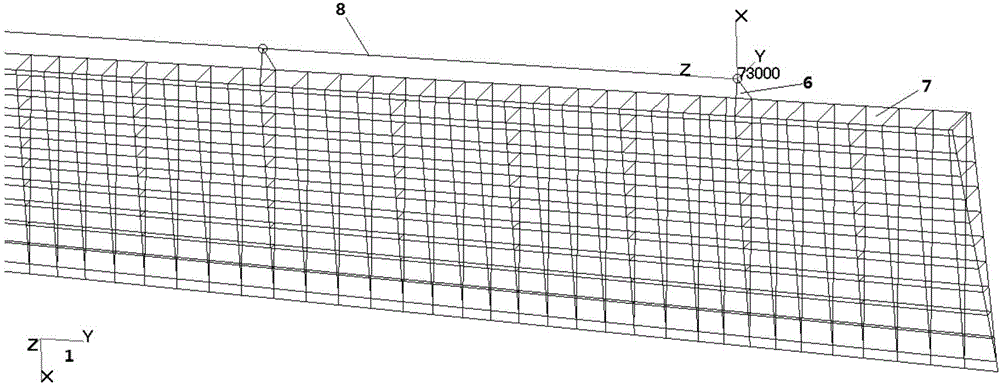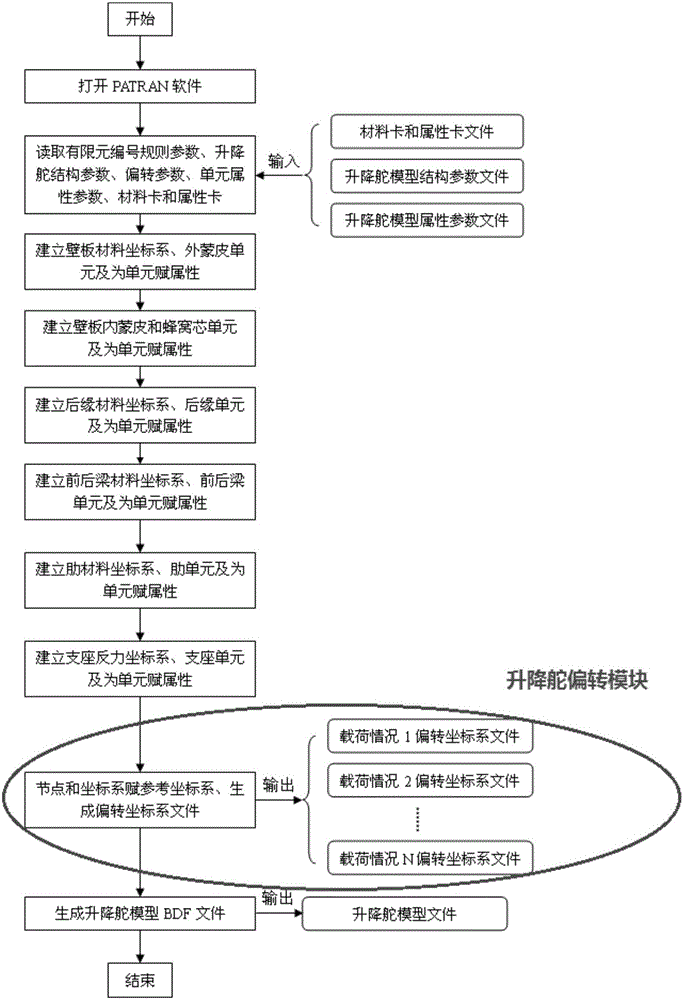Finite element model-based aircraft motion surface deflection method
A moving surface, finite element technology, applied in instruments, geometric CAD, calculations, etc., can solve problems such as the inability to realize the loaded state, and achieve the effect of rapid deflection of the model, accurate analysis results, and realization of parameterization and automation.
- Summary
- Abstract
- Description
- Claims
- Application Information
AI Technical Summary
Problems solved by technology
Method used
Image
Examples
Embodiment Construction
[0024] Take a certain type of aircraft elevator as an example to introduce the specific operation process of the deflection of the movable surface of the aircraft:
[0025] Step 1. In the basic coordinate system, that is, the overall coordinate system of the aircraft, a finite element model of the neutral position of the elevator is established, such as figure 1 The basic coordinate system shown in 1, the finite element model of the neutral position of the left elevator 2, the finite element model of the neutral position of the right elevator 3, the neutral position of the elevator is the position when the deflection angle of the elevator is 0 degrees. In this step, the conventional finite element modeling method is programmed to avoid the tedious work of manually generating a large number of nodes and elements. Such as image 3 Shown is the flow chart of the elevator parametric modeling program, and the elevator deflection module is the part that will be highlighted next.
...
PUM
 Login to View More
Login to View More Abstract
Description
Claims
Application Information
 Login to View More
Login to View More - R&D
- Intellectual Property
- Life Sciences
- Materials
- Tech Scout
- Unparalleled Data Quality
- Higher Quality Content
- 60% Fewer Hallucinations
Browse by: Latest US Patents, China's latest patents, Technical Efficacy Thesaurus, Application Domain, Technology Topic, Popular Technical Reports.
© 2025 PatSnap. All rights reserved.Legal|Privacy policy|Modern Slavery Act Transparency Statement|Sitemap|About US| Contact US: help@patsnap.com



